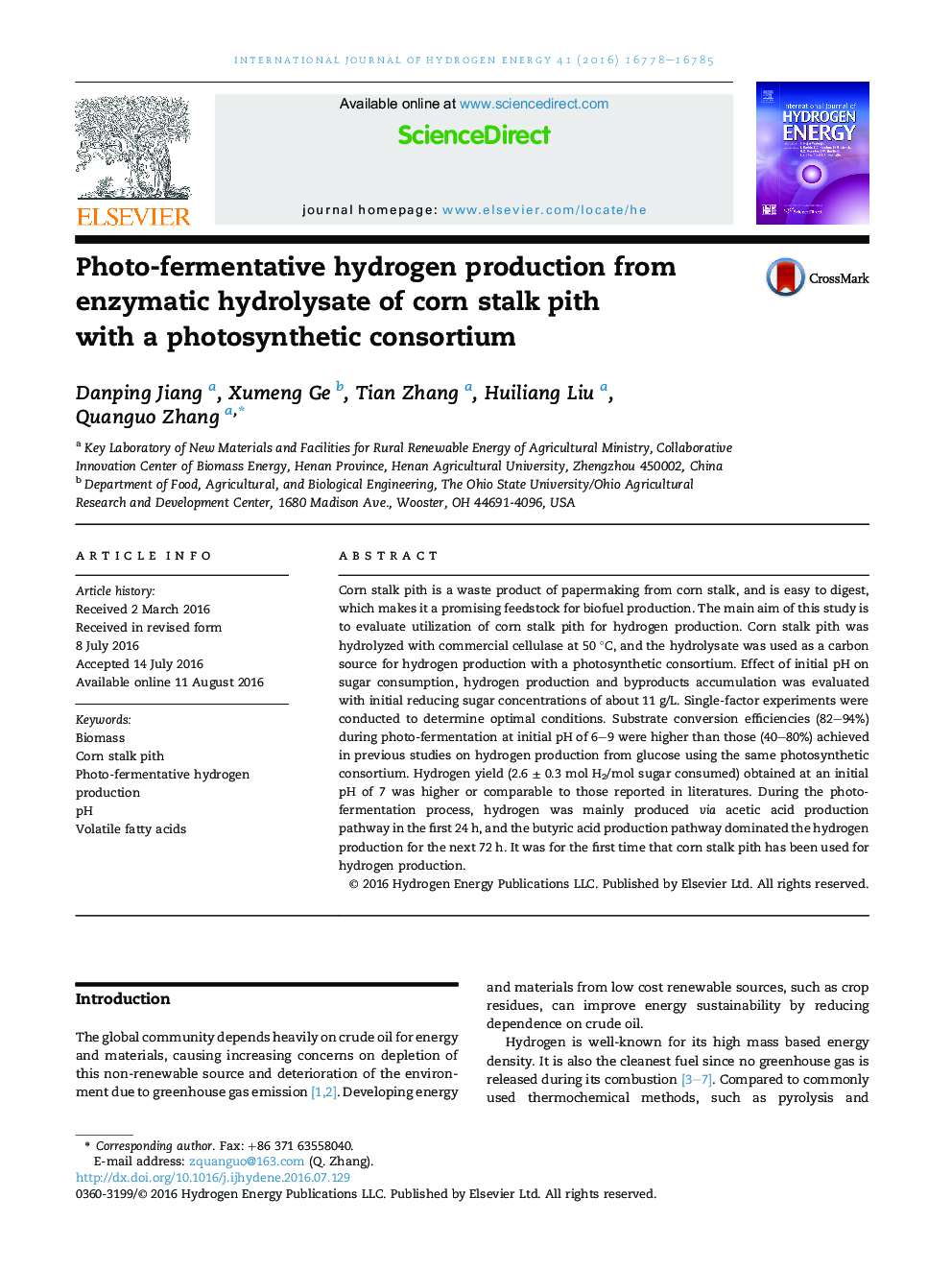| Article ID | Journal | Published Year | Pages | File Type |
|---|---|---|---|---|
| 5147687 | International Journal of Hydrogen Energy | 2016 | 8 Pages |
Abstract
Corn stalk pith is a waste product of papermaking from corn stalk, and is easy to digest, which makes it a promising feedstock for biofuel production. The main aim of this study is to evaluate utilization of corn stalk pith for hydrogen production. Corn stalk pith was hydrolyzed with commercial cellulase at 50 °C, and the hydrolysate was used as a carbon source for hydrogen production with a photosynthetic consortium. Effect of initial pH on sugar consumption, hydrogen production and byproducts accumulation was evaluated with initial reducing sugar concentrations of about 11 g/L. Single-factor experiments were conducted to determine optimal conditions. Substrate conversion efficiencies (82-94%) during photo-fermentation at initial pH of 6-9 were higher than those (40-80%) achieved in previous studies on hydrogen production from glucose using the same photosynthetic consortium. Hydrogen yield (2.6 ± 0.3 mol H2/mol sugar consumed) obtained at an initial pH of 7 was higher or comparable to those reported in literatures. During the photo-fermentation process, hydrogen was mainly produced via acetic acid production pathway in the first 24 h, and the butyric acid production pathway dominated the hydrogen production for the next 72 h. It was for the first time that corn stalk pith has been used for hydrogen production.
Keywords
Related Topics
Physical Sciences and Engineering
Chemistry
Electrochemistry
Authors
Danping Jiang, Xumeng Ge, Tian Zhang, Huiliang Liu, Quanguo Zhang,
